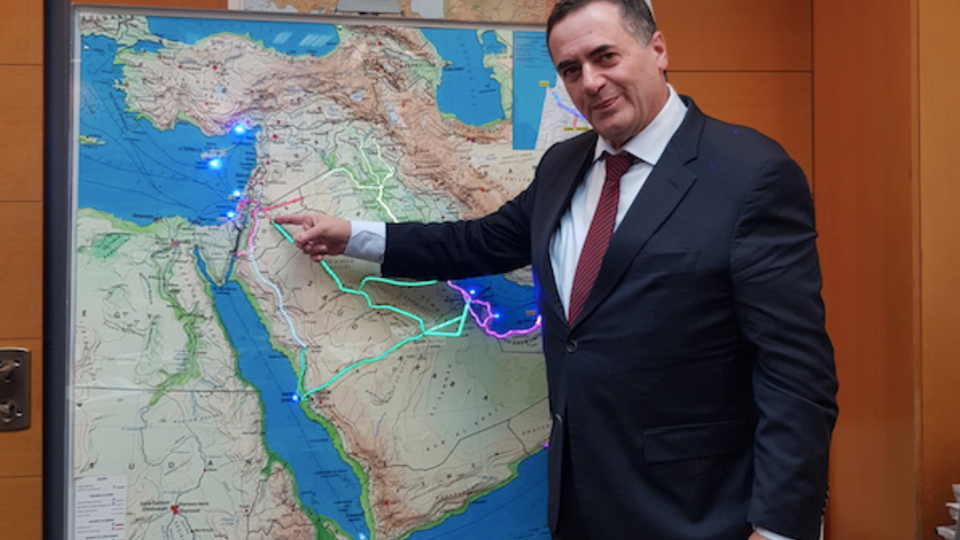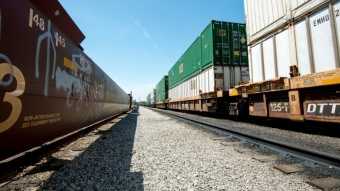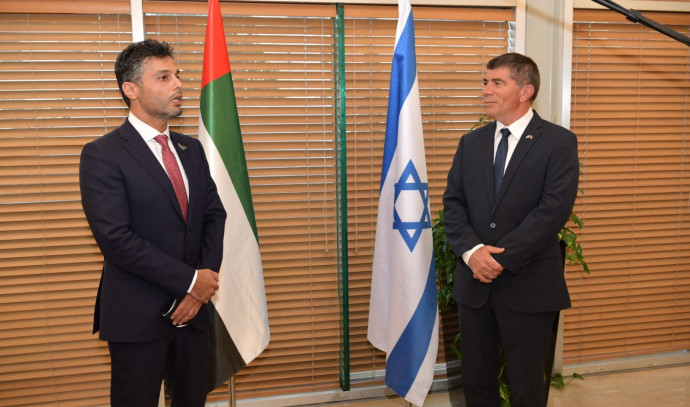Ministry of Transportation: Green light for the "Gulf to Gulf" project
The project will make it possible to transport goods coming from Jordan and the Arabian Gulf by Jezreel valley train, directly to Israeli ports. The cost of the project is estimated at NIS 3.5 billion and will include the construction of a double 15-kilometer railway between Beit She'an and the Sheikh Hussein crossing.
The National Infrastructure Committee (VTL) is currently discussing the deposit of the huge transportation project promoted by the Minister of Transportation and Road Safety by Miri Regev. The project will continue the valley railway, which connects Beit She'an and Afula to the coastal railway, and will reach the new train station and the cargo terminal at the border crossing with Jordan. An important step in advancing the plan for a rail connection between Beit She'an and the Sheikh Hussein crossing towards a future connection to the depths of the Jordan, Saudi Arabia and the Arabian Gulf.
Minister Regev: "The Gulf to the Gulf project is a mega-project that will change the face of the regional economy in the Middle East and will connect Israel to many countries in the region by rail and will be a gateway to the Mediterranean for them. This is an economic line that makes the countries of the Middle East an island of economic power and stability based on reciprocity and peace. Today we are laying the groundwork for real regional economic peace. The Abraham accords led by Prime Minister Benjamin Netanyahu are the driving force behind the realization of this vision, and the approval of the plan is the beginning of the realization of the vision for reality and a historic change in the face of the region. "
The plan will complete the main section of the inter-regional railway line, which will connect Haifa Gulf to the Arabian Gulf, via Jordan and Saudi Arabia. The railway will connect the train station in Beit She'an with the Sheikh Hussein (Jordan River) crossing on the Israel-Jordan border.
The project will enable the transportation of cargo between Israel and Jordan and significantly reduce the load of truck traffic on the roads, and complete the network of passenger tracks according to the strategic plan of Israel Railways for 2040.
The project will make it possible to transport goods coming from Jordan and the Arabian Gulf by Jezreel train, directly to Israeli ports. Today, the goods are transported by truck, some using the "back-to-back" method, in which the goods are loaded from Jordanian trucks to Israeli trucks on their way to the ports of Haifa and Ashdod.
The cost of the project is estimated at three and a half billion shekels and includes the construction of a double track route of about 15 kilometers and a system of bridges and tunnels, level separations of the track at the junction with roads 71 and 90, bridges over streams, and diversion of road 90, which will improve road safety.
Later in the project, the railway will be connected by the Sheikh Hussein Bridge (Jordan River) to the Jordanian railway network, and will serve as a land bridge to the east. It should be noted that the valley train was a branch of the Hijazi train that traveled between Haifa via Tzemach, to Damascus in Syria.
The Jezreel valley Railway will in the future serve as a regional transport corridor for the movement of goods between Europe and the Middle East, and will form a connection to the Mediterranean Sea and a bridge of peace. The line will improve the connection between the Mediterranean Sea and the Jordan and from there to the Arabian Gulf and will serve as a complementary corridor to the maritime traffic route that surrounds the Arabian Peninsula.
Upon completion of the railway, the Port of Haifa will be directly connected to the eastern border of the State of Israel, and will allow efficient and smooth movement of trade between East and West, by train. Along the route of the line, 3 trains in each direction will be operated during peak hours, in the morning and in the afternoon.
This is a strategic project that will enable the expansion and growth of trade between the Arab Gulf countries and the Mediterranean ports, while connecting Haifa Bay with the Arabian Gulf and paving the sailboats. The growth of trade between these countries and the State of Israel has broad implications, which are also an economic lever for increasing existing trade and a potential lever for the existence of economic peace in the Middle East.
PORT2PORT - שרשרת אספקה לוגיסטיקה שילוח

www.port2port.co.il



www.israellycool.com





 www.jewishpress.com
www.jewishpress.com



